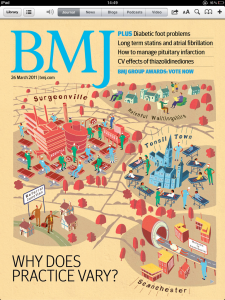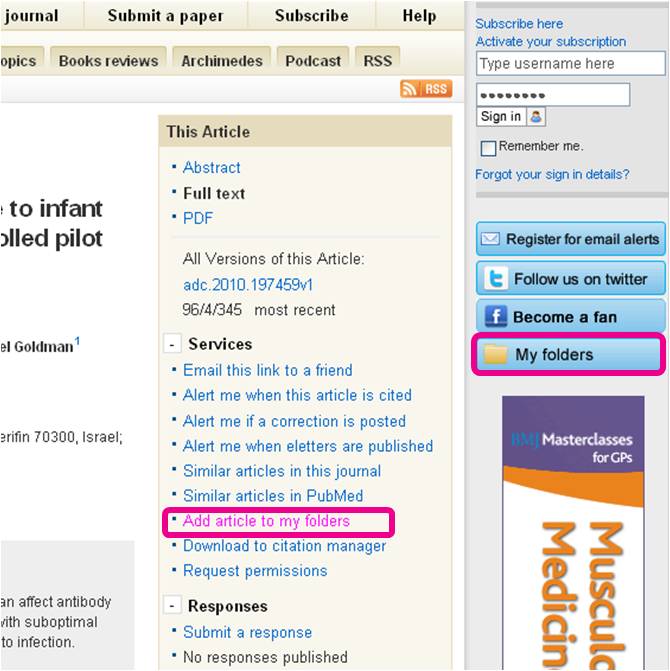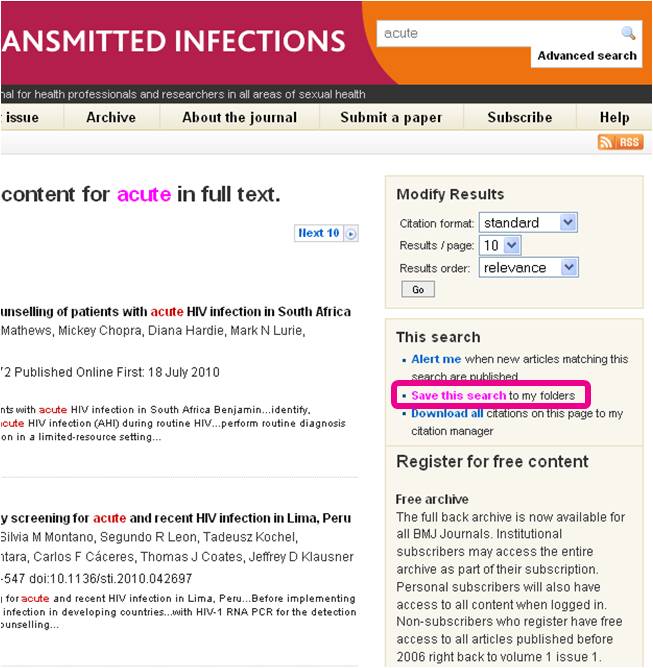
The bmj.com topics page is one of the site’s top 20 most visited pages, linking to 290 collections of clinical and non-clinical topics. Each one is powered by tagging tool called Semio, which trawls articles for keywords and then attaches that article to one or more collections. Visitors to the site can sign up for specialty-specific email alerts. So a psychiatrist, for example, can receive email alerts every time an article is posted about mental health.
Some of these clinical collection pages were revamped recently and now pull in not only BMJ articles but also relevant content from BMJ Group’s 39 specialist journals. There are also links to the latest jobs in that specialty (pulled from BMJ Careers), plus BMJ Learning modules and discussions from doc2doc, BMJ Group’s clinical community for doctors worldwide.
We’ve called these new pages “specialty portals,” and launched with oncology, diabetes, and psychiatry. Their design is slightly different from the standard bmj.com topic collection pages, and we were pleased to attract sponsorship for the diabetes portal, which is currently supported by an unrestricted grant from Novonordisk.

As the diabetes portal makes clear, the company has no influence on the editorial content displayed, but you do, by giving us your feedback on the portals we’ve launched so far, via this blog.
Semio is an automated tool and replaced the manual tagging we used to use each time an article was posted on bmj.com. Manual tagging was very time-consuming and quite subjective. We’re continually refining Semio to ensure the content displayed is relevant to diabetologists, psychiatrists, and oncologists (plus anyone with an interest in these three clinical areas). If we restrict Semio too much on the diabetes portal, for example, we risk excluding articles that perhaps mention diabetes alongside other chronic conditions. If we apply very loose tagging rules, we could end up with a list of headlines that fail even to mention diabetes and risk confusing visitors to this page. We plan to introduce some manual “over-rides” in the near future, and to involve practising clinicians as portal
editors. These can advise on which articles to exclude, perhaps write a blog on latest developments in their clinical specialty, and participate in clinical discussions on doc2doc.
The other issue is recency versus relevance. Websites that update regularly tend to attract more visitors. The dilemma this presents is how to ensure a very relevant paper that could be months or even years old still shows on the portal. To address this, we have five manually added “Top 5” articles from across BMJ Group. Again, give us your feedback on this selection. You may think other articles should be in there. Perhaps the diabetes podcast we produced last month should be there? Let us know.
Both the topic collections and specialty portals are bmj.com pages, and they will undergo further changes later this year when the site redesign goes live. We plan to colour code them, and to highlight them more prominently from relevant articles. So a BMJ research paper about cancer, for example, will have a colour coded link to the oncology portal showing at the top, plus any other relevant topic collection links.
Portals, of course, are just one way of clustering content online, and Semio is just one tool out there. Some sites suit the “handpicked” approach better. The portal for junior doctors is a good example of this. Each week my colleague Helen Macdonald (a GP trainee and BMJ assistant editor) looks at what’s been published across the Group and suggests some links for our junior doctor portal (although there is some automation also). A similar approach is used for the site we set up to highlight the NHS reforms in England, and the one we developed three years ago to mark the 60th
anniversary of the NHS.
Again, we’d be interested in your feedback. Should our portals include feeds to content from other sites, for instance? And although 290 collection pages sound like a lot, are we missing any?
David Payne, editor of bmj.com











